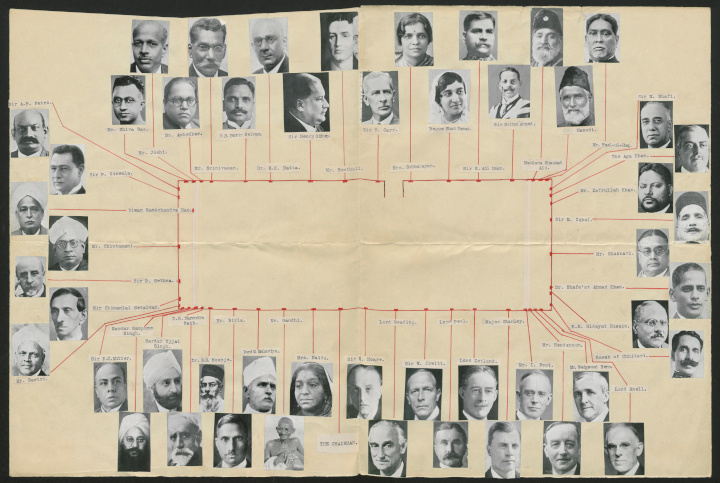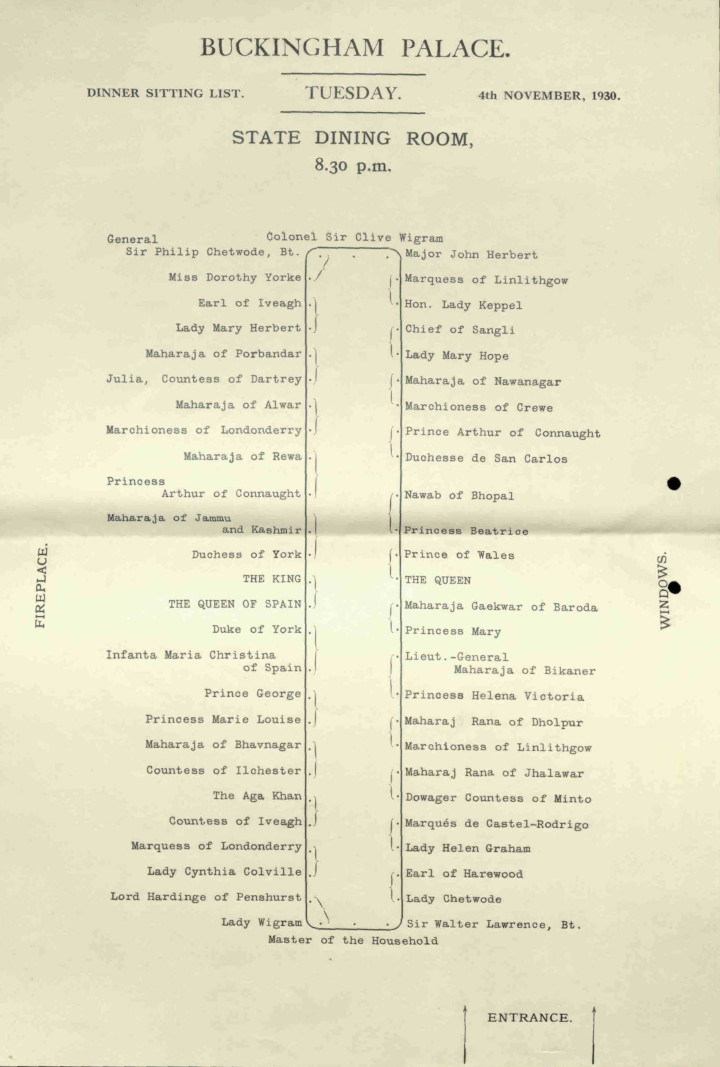Seating plans
Round Table seating plan
This seating plan for the divisive ‘Minorities Committee’ shows how the divisions between delegates at the second conference session were mapped on to a conference table. The Committee had been established to deal with the ‘safeguards’ for religious communities in the new constitution. The orchestration of the committee table maps the religious categories into which delegates were divided. In the bottom-right sat British officials, while on the other side of the Chairman (Ramsay MacDonald) sat Gandhi and his supporters. Hindu and Sikh delegates were on the left; labour, untouchable, Christian and women’s representatives at the top; and Muslim delegates to the right. The photographs were taken from the India Office’s Who’s Who style guides to delegates and suggests that the photographs were used to prepare MacDonald in advance for the dozens of delegates he would have to negotiate, and remember.

Click image to enlarge
Buckingham Palace dinner seating plan
On 4th November 1930 King-Emperor George V welcomed the Princes to a special dinner at Buckingham Palace. Whilst non-royal Indian delegates were invited to an afternoon tea party at the Palace, only the royal ‘Princes’ (Maharajas, a Nawab and also the Aga Khan, a member of the British Indian delegation) were invited for a lavish dinner (the Prince’s wives were scheduled to have a private meeting with Queen Mary). The seating plan visually illustrates how an international conference allowed two aristocratic and royal hierarchies, European and Indian, to fit together, over dinner.

Click image to enlarge